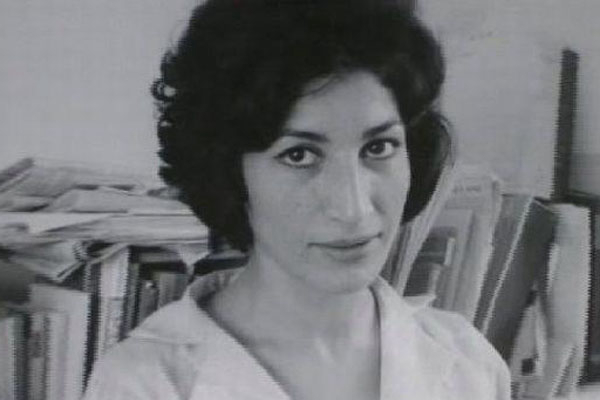Thus far, I have introduced you to a number of legendary men
in our history. Stereotypically, it’s rare for us to view women as great heroes and legends. This month I would like to introduce you to a woman who has given birth to the power of self-expression in ancient Iran: a freedom of speech foreign to women of her time!
Born in Tehran in 1935, Forugh Farrokhzad is one of the rare cases of Iranian women who defeated the rigid image of feminism in the early 19th century.
She discovered her talents at the age of 15 and attended Kamal-ol-Molk’s Technical School seeking knowledge in the fields of painting and dressmaking. Although both subjects were appealing to her, (specially painting which became a second avenue of her talents), she captured self expression in poetry. At the age of 16, she married her cousin Parviz Shapoor and gave birth to her only child, Kamyar a year later. Within two years after her son’s birth, her marriage failed and she left her son and husband to pursue her passion as an independent woman. The greatest importance in Farrokhzad’s three stages of development as a woman: her marriage, divorce, and abandoning of her child, was her personal declaration of conflicts between social expectations and her own tendencies:
It was I who laughed at futile slurs.
The one that was branded by shame
I shall be what I’m called to be, I said
But, oh the misery that “woman” is
my name.
Her decision to pursue poetry was against the norm of women at that time; hence, it attracted much attention and opponents. “The Captive”, “The Wedding Band”, and “Call to Arms” resemble her perspectives on conventional marriage, difficulty of women in Iran, and her incapability to live a conventional life as a mother and a wife. She suffered a nervous breakdown in September of 1955 that led her to a psychiatric clinic. Following her recovery, she went to Europe for a period of nine months during which she studied film and became acquainted with writer and cinematographer, Ebrahim Golestan. Her most famous work, “The House is Black” was filmed in 1962 with the help of her colleagues who believe that it represented Farrokhzad’s view of contemporary Iran.
She has published five volumes of her poetry, 4 of which became available during her lifespan and the fifth volume that was published after her death: “Prisoner” (1955), “The Wall” (1957), “Rebellion” (1958), “Another Birth” (1964), and “Let Us Believe in the Beginning of the Cold Season” (1965). Farrokhzad was killed in 1967 in a fatal car accident at the early age of 32.
Her tomb in Zahiro-Doleh cemetery in Tehran is regularly visited by thousands
of her most loyal fans.
Forugh Farrokhzad is one of the most distinct women in Iran’s history. She
has been able to defeat the social norms of symbolic restraint in woman’s
self –expression. In one of her most famous quotes she says, “Until you reach
your liberated and free self, isolated from constricting selves of others, you will not accomplish anything. Art is strongest when it avails itself only to those who thoroughly surrender their whole existence to it”.
Her poems are an effect of emotional and psychological frustrations that gave
her the strength to turn “from personal to collective, from the female to the human, and from the private to the public.”
She has given the women of her country the courage to declare a voice by encouraging them to understand their state of oppression while giving them a reason to fight silence!

